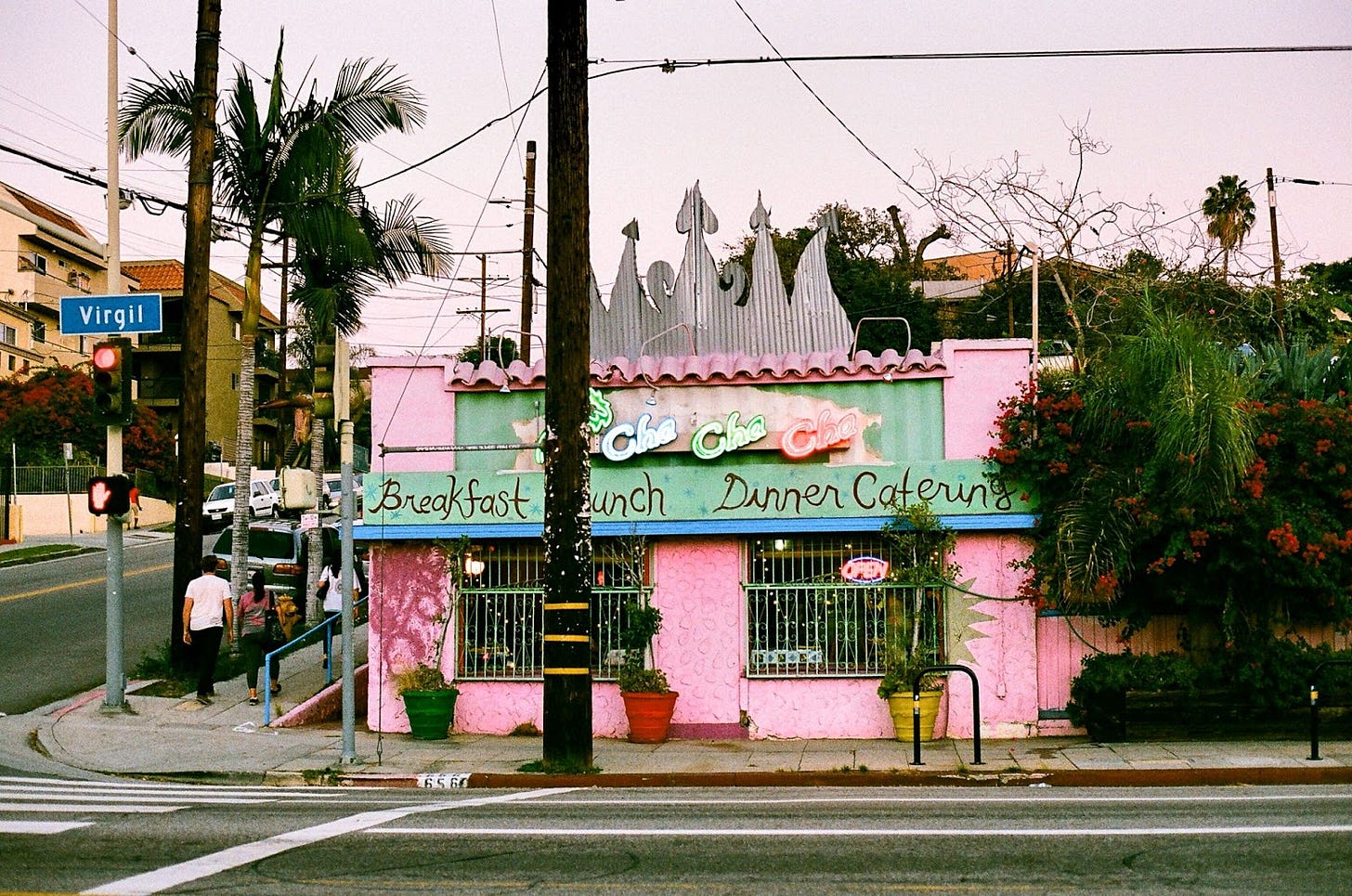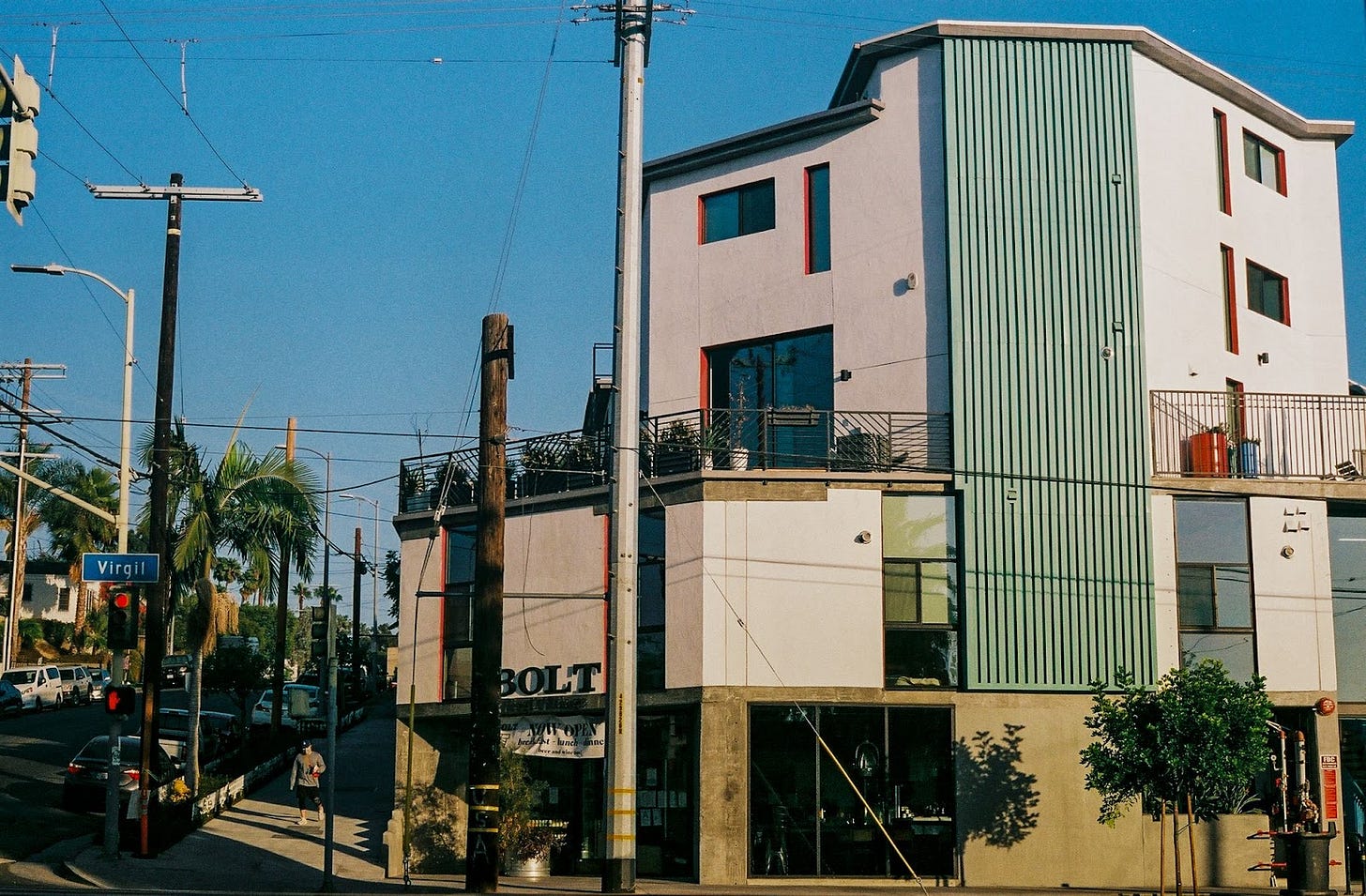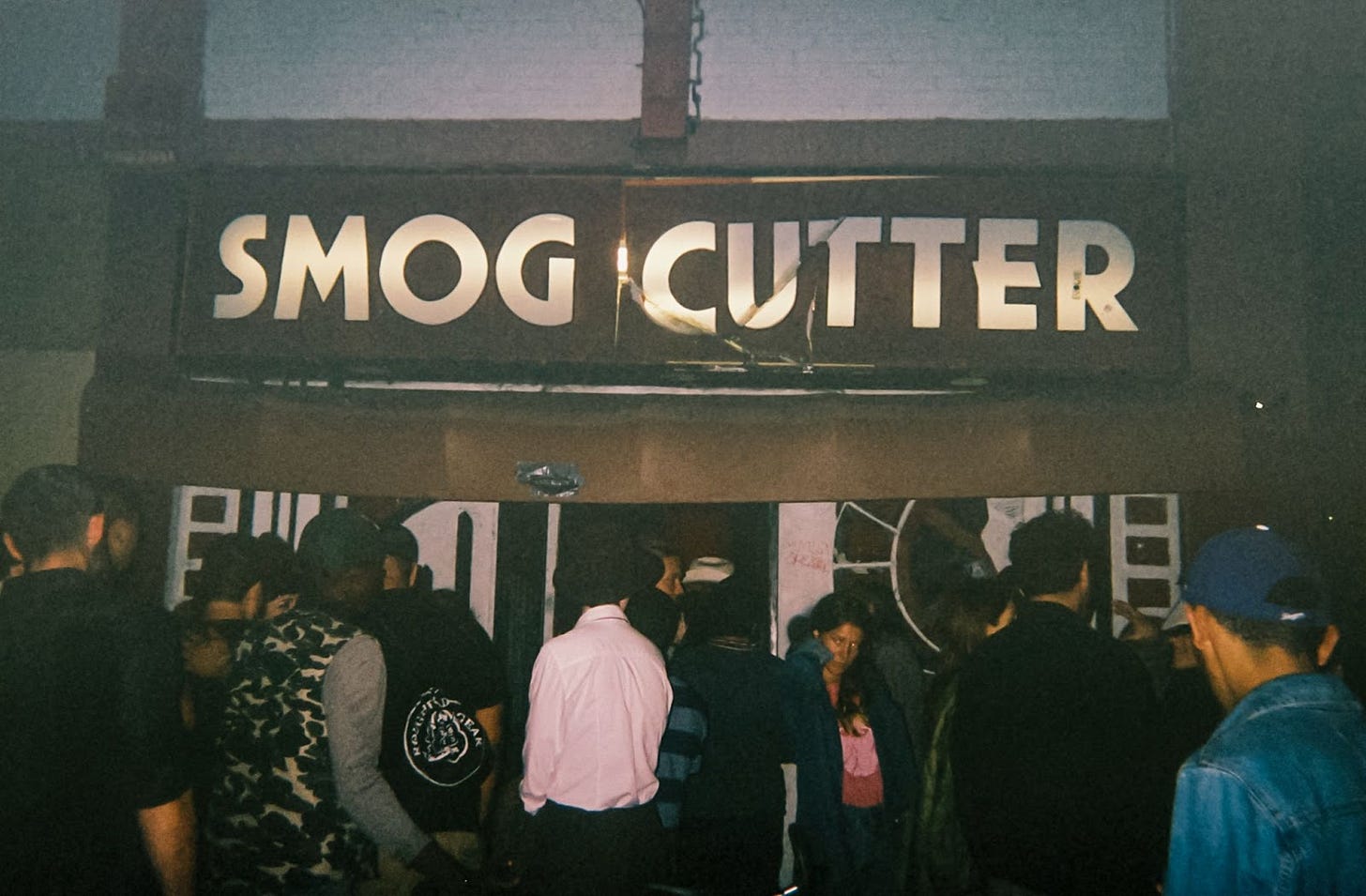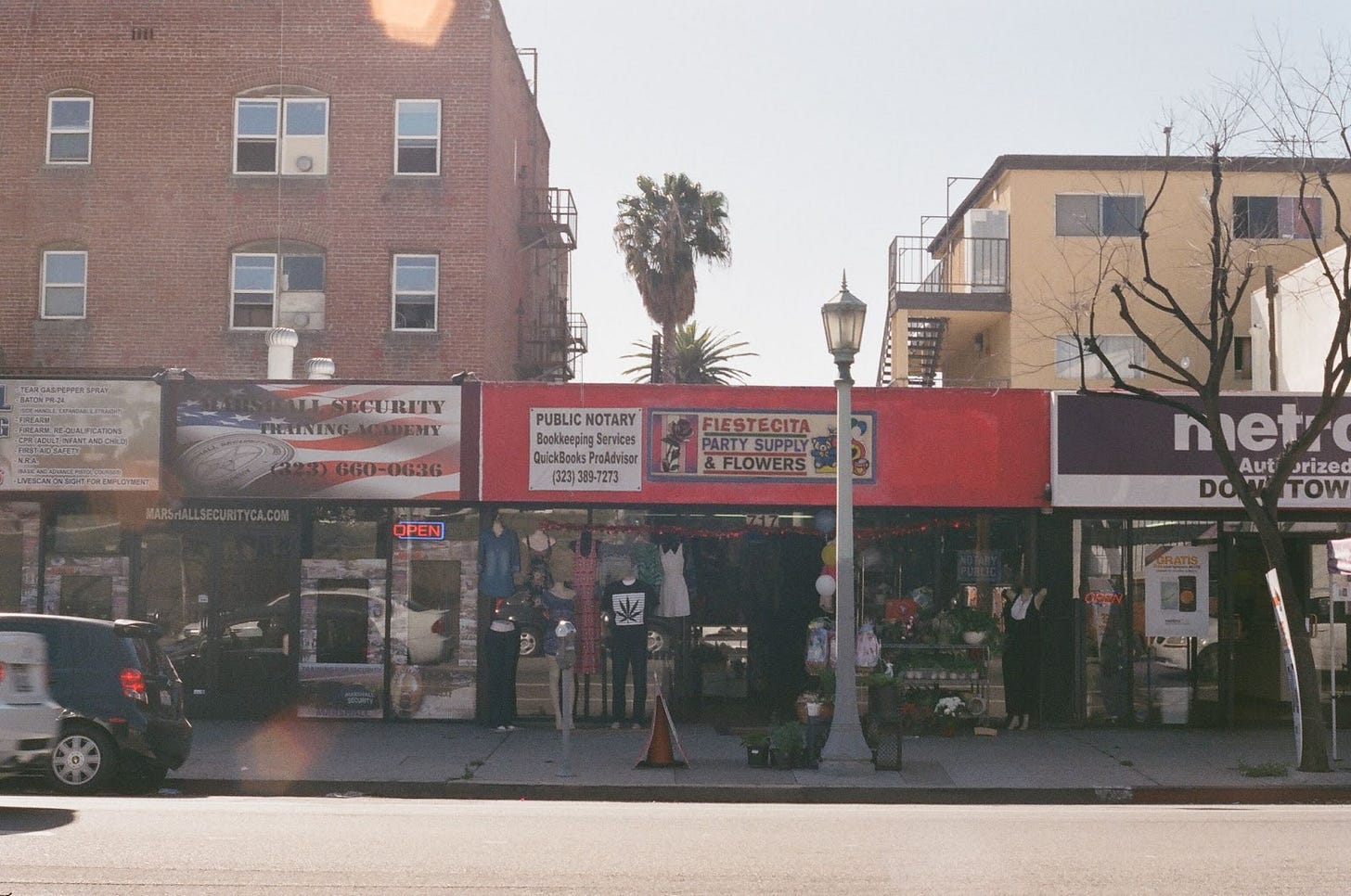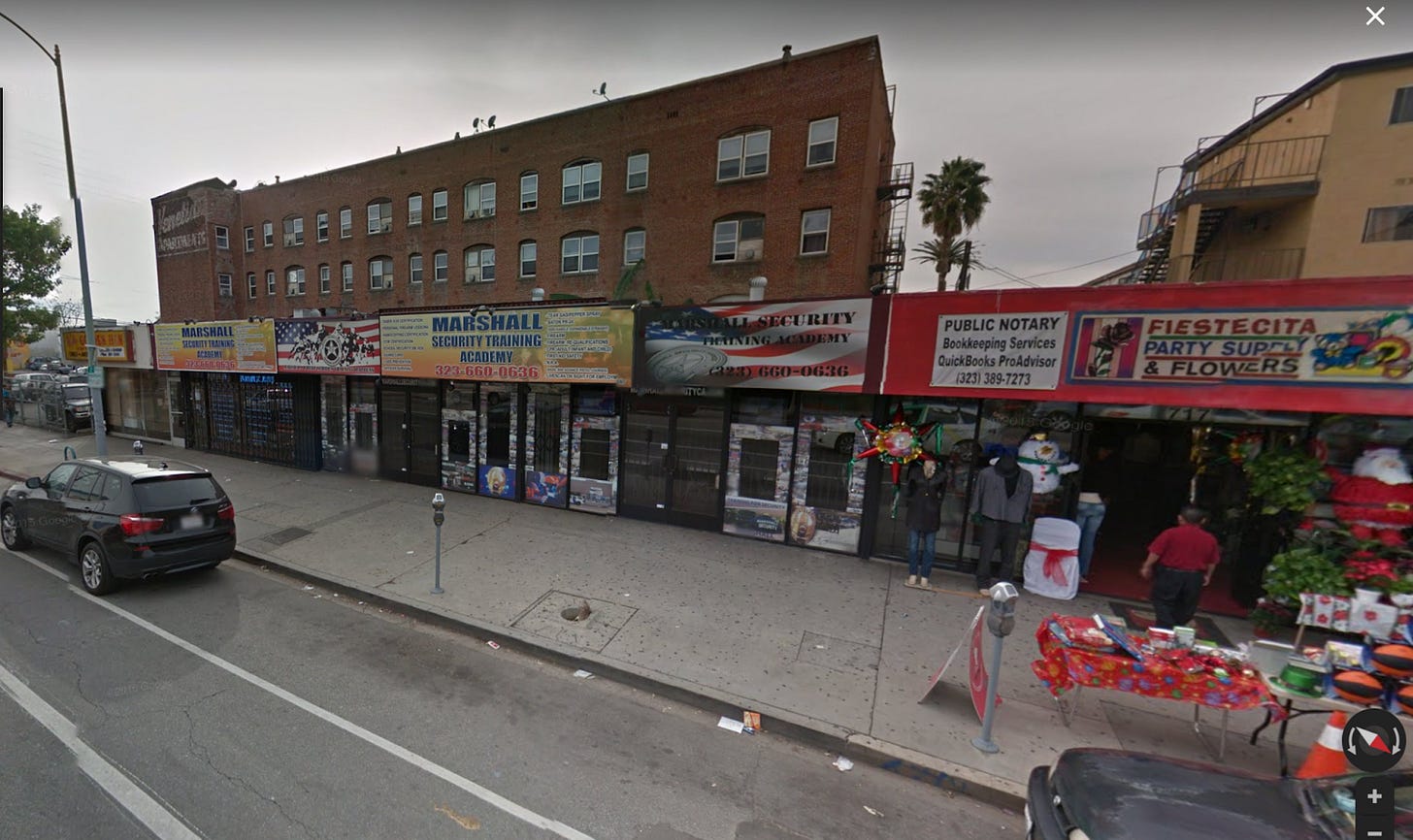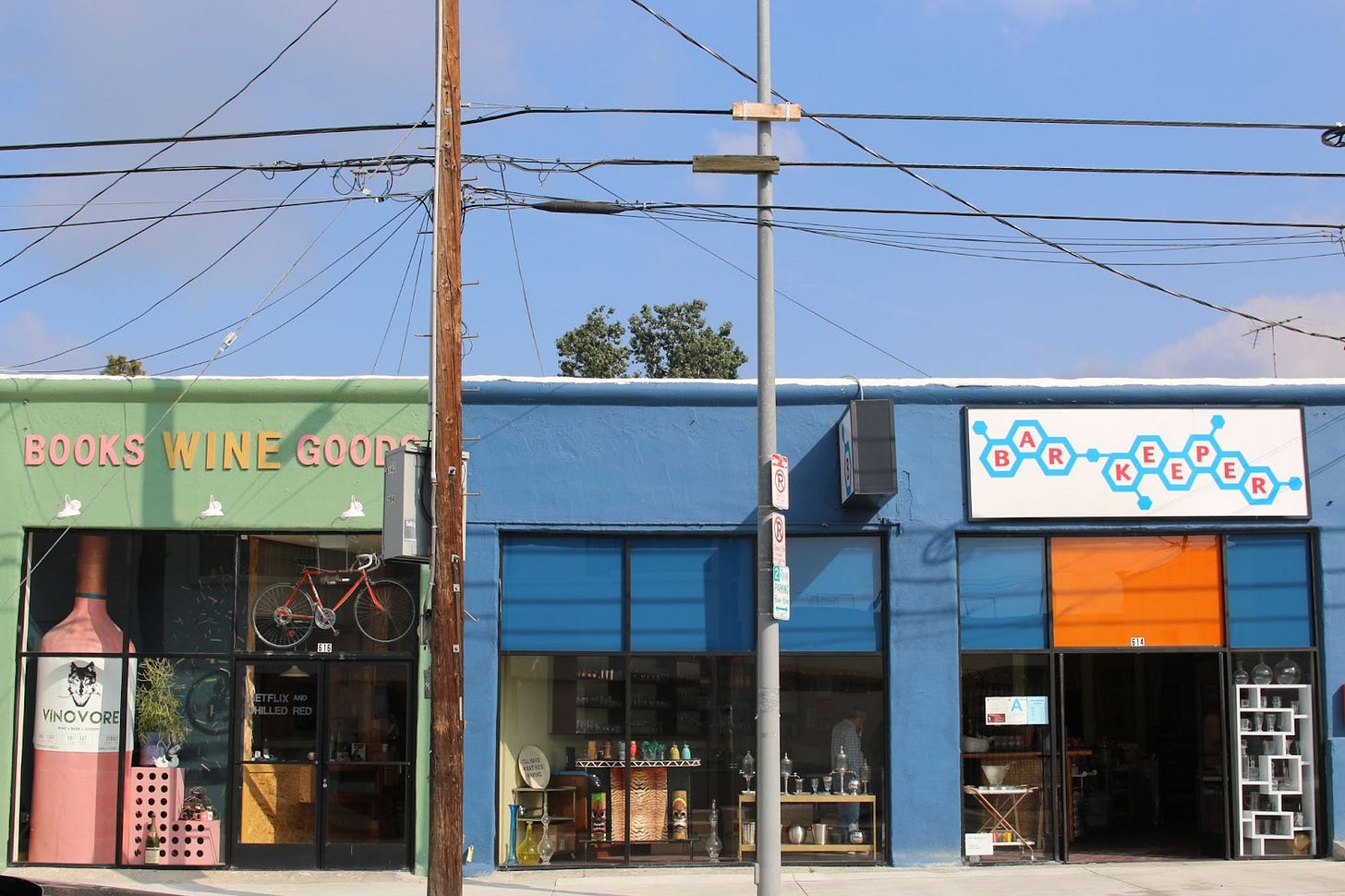In 2017, when I started This Side of Hoover—an Instagram account documenting gentrification and resilience in East Hollywood—I was very intent on documenting every physical change happening in Virgil Village. Virgil Village is a small neighborhood located in the eastern part of East Hollywood. I tried my best to photograph every existing business along a seven block stretch on both Virgil Avenue and Hoover Street (which is the street demarcating the boundary between East Hollywood and Silver Lake). The hope was that if I took photos now, as things inevitably changed, I would have a record of what once was. Then, when long-standing businesses were replaced or demolished, I would document that change, too.
My goal was and is to show gentrification LOOKS like on the ground as the landscape of a neighborhood changes. So far I’ve done just that. But in the last two years, gentrification and displacement in the neighborhood feels like it’s on overdrive. I often find myself unable to keep up.
It’s staggering to see the level of change the neighborhood has undergone. There are parts of the neighborhood I no longer recognize. Apartment buildings are constantly gutted, leaving me to wonder, who lived there? Did I know them? Where did they go? Even the sounds of the neighborhood have changed. I very rarely hear the cumbia and norteño music that was a constant part of the sonic landscape during weekend backyard parties. I can’t even imagine what it’s like for people who have lived here for 20, 30, 40, 50 years.
Through my reporting on gentrification, I often get comments about how “change is normal.” I hear people say, “all neighborhoods change, just look at Boyle Heights, it was once Jewish and now it’s Mexican.”
While change is part of the human condition and our built environments are destined to evolve, there are some important questions we might ask ourselves on this topic: Was the change voluntary or forced? Was it a result of upward mobility and access to new resources or a result of forced displacement? Was the change brought about by the people who’ve lived and worked here or was it brought about by decades of discriminatory housing policies and unchecked development? Was this change natural or designed? Who benefits from the change and who is harmed?
For this post, I’m placing past and present images of the built environment side by side. I felt a need to just SEE these changes all at once. To take stock of what’s happened.
Since my documentation is fairly recent, I had to source some images from Google Earth, which has captured the neighborhood since 2007. These side-by-side images only show what was there since the early 2000s. Without an archive of community history, we are left to use Google to visually understand the extent of the change, loss, and displacement. All photos are by me, except when noted otherwise.
4632 SANTA MONICA BLVD: Union Swapmeet, in operation from 1986-2020. Now an empty lot awaiting development.
777 N VIRGIL AVE: Panadería Super Pan, in operation from 2000-2018 when the landlord refused to renew the lease. Now Courage Bagels.
654 N VIRGIL AVE: Cha Cha Cha, in operation from 1986-2016. Now condos and Bolt Coffee Shop.
864 N VIRGIL AVE: The Smog Cutter Bar, in operation for over 70 years before closing in 2017 when the landlord refused to renew the lease. Now Bolita, a Cuban themed cocktail bar.
720 N VIRGIL AVE: La Raza Market and Los Cebollines Mexican Restaurant (which later became the Mexican restaurant Gus’s Lunch Box. Now Sqirl.
751 N VIRGIL AVE: Alma’s Guatemalan Restaurant. Now Melody Wine Bar.
904 N VIRGIL AVE: Family Beauty Salon. Now Alma’s Cider & Beer.









